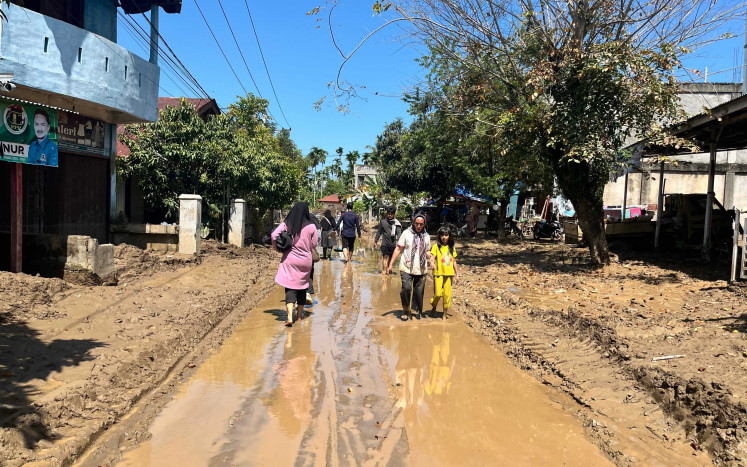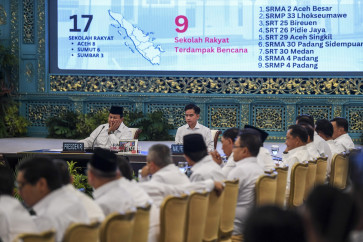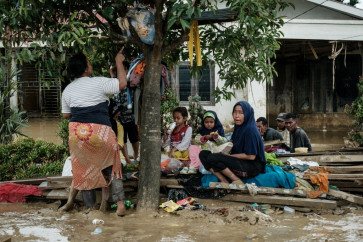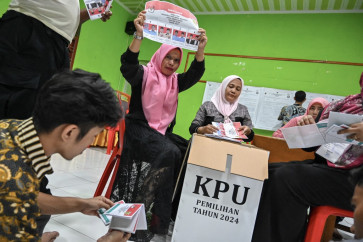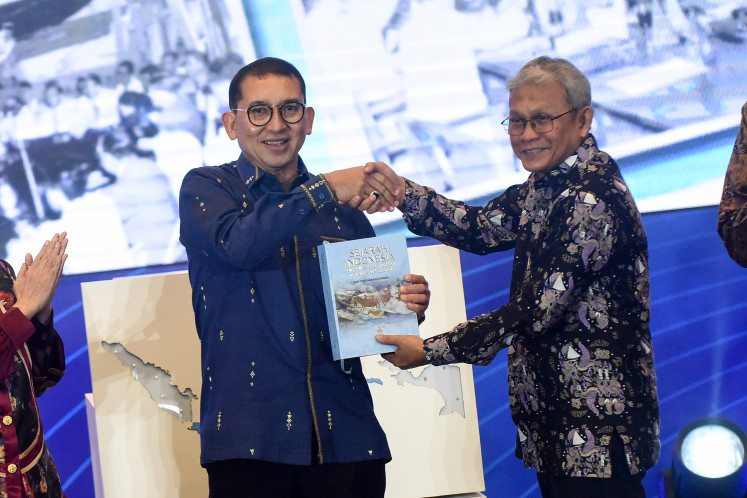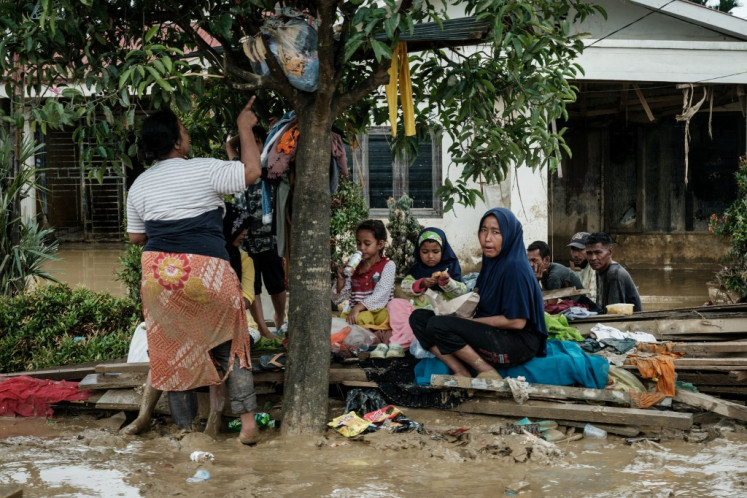Popular Reads
Top Results
Can't find what you're looking for?
View all search resultsPopular Reads
Top Results
Can't find what you're looking for?
View all search resultsCheonggyecheon, a major river reborn
Lit up: In December, the festive atmosphere of Cheonggyecheon River is emphasized with hundreds of ornamental lamps and accessories
Change text size
Gift Premium Articles
to Anyone
Lit up: In December, the festive atmosphere of Cheonggyecheon River is emphasized with hundreds of ornamental lamps and accessories.
In the evening, Cheonggyecheon River in the heart of Seoul, South Korea, is so gorgeous with its colorful lamp decorations as hundreds crowd around to enjoy the beauty of the stream against the glittering backdrop of the capital's high-rise buildings. Over the past 10 years, the 5.8-kilometer river dividing Seoul from west to east has become an attractive tourist spot. During daylight hours, visitors meander along the pedestrian-only riverside lanes, seeking peace from the bustle of the city.
Once filthy and smelly, the river is now a very convenient place. For centuries prior to its restoration in 2002, Cheonggyecheon was like most of the dirty rivers in Jakarta; rows of wooden houses lined the riverbank and it was oft used as a public latrine and garbage dump. Cheonggyecheon was a symbol of urban poverty in Seoul and, at night, the area was notorious for its crime.
According to Korea's Tourism Ministry, Cheonggyecheon's nickname during the Japanese occupation period was 'city's cancer' and the levee road was dubbed 'killer road'. The construction to cover it began in 1958 and was completed in 1977. Cheonggyecheon became Cheonggye Road and markets and factories were built next to it to lead Korea's industrialization.
Finally, in 2001, Seoul's then mayor Lee Myung-bak ' who later became President of South Korea (2008-2013) ' initiated a river restoration project. The restoration idea came about due to a threat to safety posed by the deteriorating road.
'After 30 years, the road had become a public safety hazard. Its concrete structures were corroded and curved. Sooner or later it would collapse,' said Choi Sung-jin, manager of Cheonggyecheon Museum in Seoul.
The Seoul city government decided to tear down the road in 2002 and at the same time, launched the restoration of Cheonggyecheon, added Choi.
'At first the restoration project wasn't all that smooth. Protests from settlement dwellers, traders and non-government organizations emerged, often based on a fear of being evicted and losing livelihood,' he noted.
But the project kept going. The city authorities relocated local residents and provided them with housing and free kiosks for their businesses. The restoration was completed in September 2005 at a cost of 386 billion won. Since then, the once-muddy river turned concrete road has virtually been reborn.
Despite its more modern appearance, Seoul continues to maintain the river's ecology. Cheonggyecheon has been reverted to function as the original habitat of a variety of the city's birds. The river's transparent water is teeming with fish and flowers can be found along its banks.
Last one standing: An old house is kept intact on the Cheonggyecheon riverbank to remind people of the condition before the restoration of the river. Hundreds of houses were demolished in 2002 for restoration work.
The river sees annual Lantern Festivals in both November and on Lunar New Year holidays and during December the festive atmosphere of Cheonggyecheon is emphasized with hundreds of ornamental lamps and accessories adorning the river.
While cafes and shopping centers are scattered in the vicinity, the riverbanks of Cheonggyecheon have become the place for residents to relax at the end of a busy day.
'I often come here to rest, sitting on the riverbank and immersing my feet in the water. Once in a while I drink coffee and watch live music at a café,' said Christine Wong, 46, a resident of Seoul.
Along the stream the city government has built 22 bridges, seven of which are pedestrian bridges. From atop these structures tourists can stop and observe the true charm of the river.
Cheonggyecheon's long history covers the Joseon dynasty, the Japanese occupation, the Korean War and the era of industrialization in Seoul. Its flow is estimated to have passed the Joseon capital of Hanyang (old name of Seoul) 600 years ago and is thus reputed to have contributed to the growth of local civilization.
For this reason, Seoul authorities also established the Cheonggyecheon Museum.
Across the road, detached from the museum, is an area known as the 'experience zone' exhibit, featuring a life size reproduction of a village with homes and shops that would have been found on the banks of the Cheonggyecheon in the years after the Korean War. 'The houses serve to show that, prior to restoration, the river's surroundings weren't as they are now. Not just the houses, everything about the river is kept at the museum,' said Choi.
The museum preserves the past of Cheonggyecheon in a diorama and photographs documenting its long history, from its known beginnings through to an in-depth look into the entire restoration process, including the protests against the project and the opening of Cheonggyecheon after project completion.
'It's not easy to build an environment-friendly zone in the hub of a busy city. Cheonggyecheon, as an icon of Seoul, demonstrates that a project isn't likely to be beneficial unless it is environmentally sound. That's the point,' he explained.
In Surakarta, Pepe River, passing through Boyolali in Central Java, is known as the dirtiest stream despite its high historical value. Cheonggyecheon's past is much like the Ciliwung River in Jakarta or Semarang River separating Pecinan, Kampung Melayu and Kota Lama in Semarang, Central Java.
When will our rivers be reborn?
Long history: A visitor looks at pictures depicting the condition of the Cheonggyecheon River in the past at the Cheonggyecheon Museum. The river has a long history, dating back to the Joseon era some 600 years ago.
' Photos by Ganug Nugroho Adi



